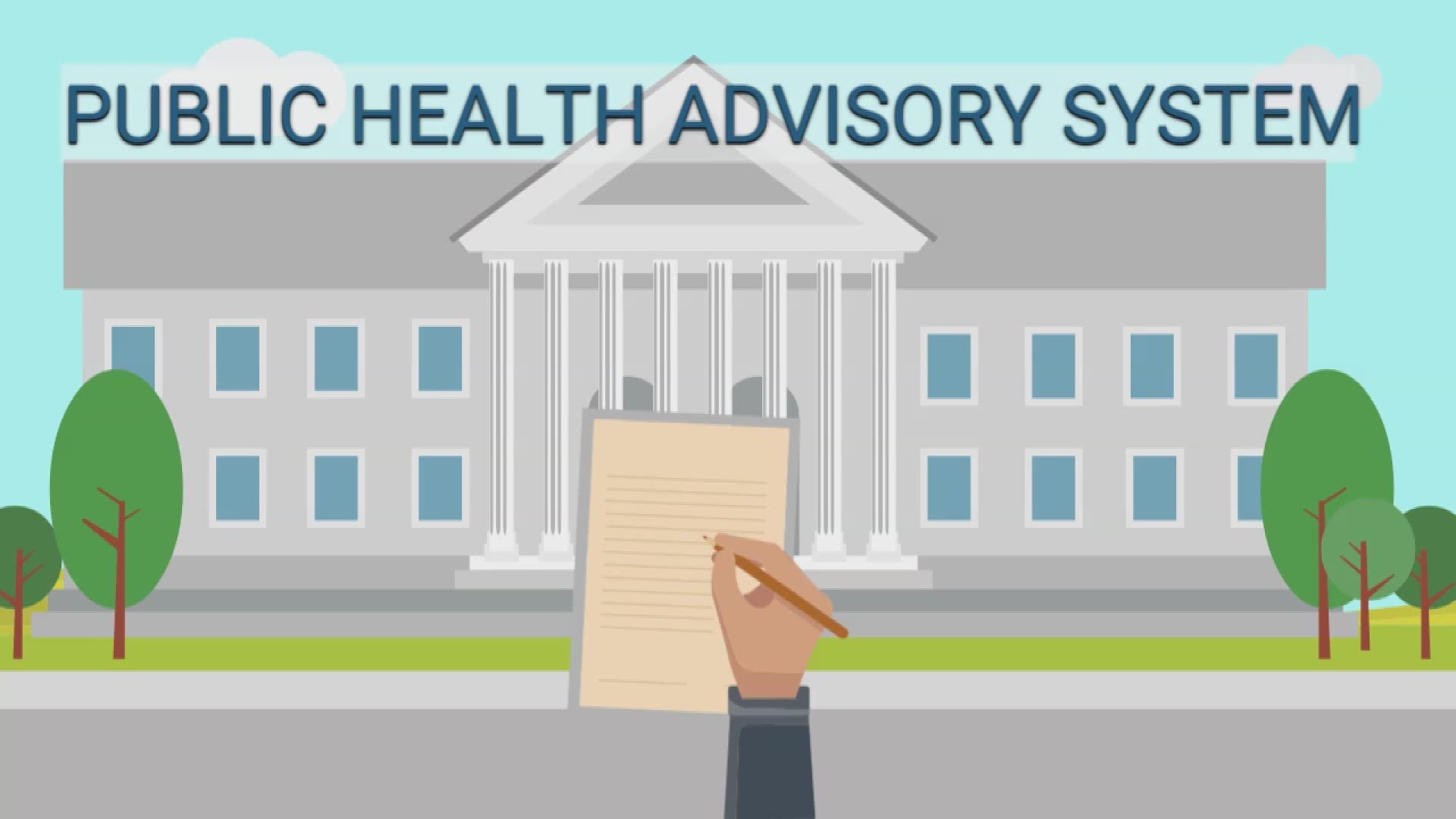COLUMBUS, Ohio — Gov. Mike DeWine unveiled the Ohio Public Health Advisory System to let residents know where their counties stand as far as their level of risk to COVID-19 exposure.
The system is color-coded, with yellow being the least amount of risk (Level 1), orange being increased amount of risk (Level 2), red being very high amount of risk (Level 3), and purple being severe exposure risk (Level 4).
Each level has a corresponding course of action for residents to take, DeWine said. Here is what residents are expected to do under each risk level:
LEVEL 1 YELLOW ALERT (active exposure and spread)
- Conduct a daily health/symptom self-evaluation and stay at home if
- symptomatic.**
- Maintain social distancing of at least 6 feet from non-household members.
- Wear face coverings in public, especially when social distancing is difficult to maintain.
- Increase caution when interacting with others not practicing social distancing or wearing face covers.
- Avoid traveling to high-risk areas.
- Follow good hygiene standards, including:
- Wash hands frequently with soap and water for at least 20 seconds.
- Use hand sanitizer frequently.
- Avoid touching your face.
- Cover coughs or sneezes (e.g., into a tissue, or elbow).
- Symptom self-evaluation monitoring
LEVEL 2 ORANGE ALERT (increased exposure and spread; exercise high degree of caution)
Same guidelines as in Level 1.
- Avoid contact with anyone who is considered high-risk.
- High-risk individuals* should take extra care to follow precautions.
- Decrease in-person interactions outside household.
- Seek medical care as needed, but limit or avoid unnecessary visits to hospitals, nursing homes, and residential care facilities to see others as much as possible.
LEVEL 3 RED ALERT (very high exposure and spread; limit activities as much as possible)
Same guidelines as in Levels 1-2.
- Decrease in-person interactions with others.
- Consider necessary travel only.
- Limit attending gatherings of any number
LEVEL 4 PURPLE ALERT (severe exposure and spread; only leave home for supplies and services)
Same guidelines as in Level 1-3.
- Stay at home/ necessary travel only.
Households should assume that if one person is sick every person living there is as well and should take appropriate measures to control the spread, which should include self-quarantining and contacting a doctor, the Ohio Department of Health said.
*Per CDC, among adults the risk for severe illness from COVID-19 increases with age, with older adults at highest risk. People of any age with the following conditions are at increased risk of severe illness: chronic kidney disease; chronic obstructive pulmonary disease; weakened immune system from solid organ transplant; obesity (body mass index of 30 or higher); serious heart conditions such as heart failure, coronary artery disease, or cardiomyopathies; Sickle cell disease; and Type 2 diabetes mellitus. Children who are medically complex, who have neurologic, genetic, metabolic conditions, or who have congenital heart disease are at higher risk for severe illness from COVID-19 than other children. People who need to take extra precautions include racial and ethnic minority groups; people experiencing homelessness; women who are pregnant or breastfeeding; people with disabilities; and people with developmental and behavioral disorders. More information is available at https://www.cdc.gov/coronavirus/2019-ncov/need-extra-precautions/index.html.
** Per CDC, symptoms of COVID-19 include fever or chills, cough, shortness of breath or difficulty breathing, fatigue, muscle or body aches, headache, new loss of taste or smell, sore throat, congestion or runny nose, nausea or vomiting, and diarrhea. This list of symptoms can change as more is learned about COVID-19, and CDC updates this list on its website at https://www.cdc.gov/coronavirus/2019-ncov/symptoms-testing/symptoms.html

